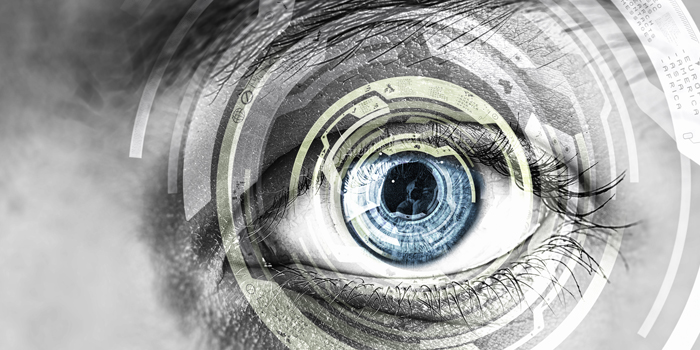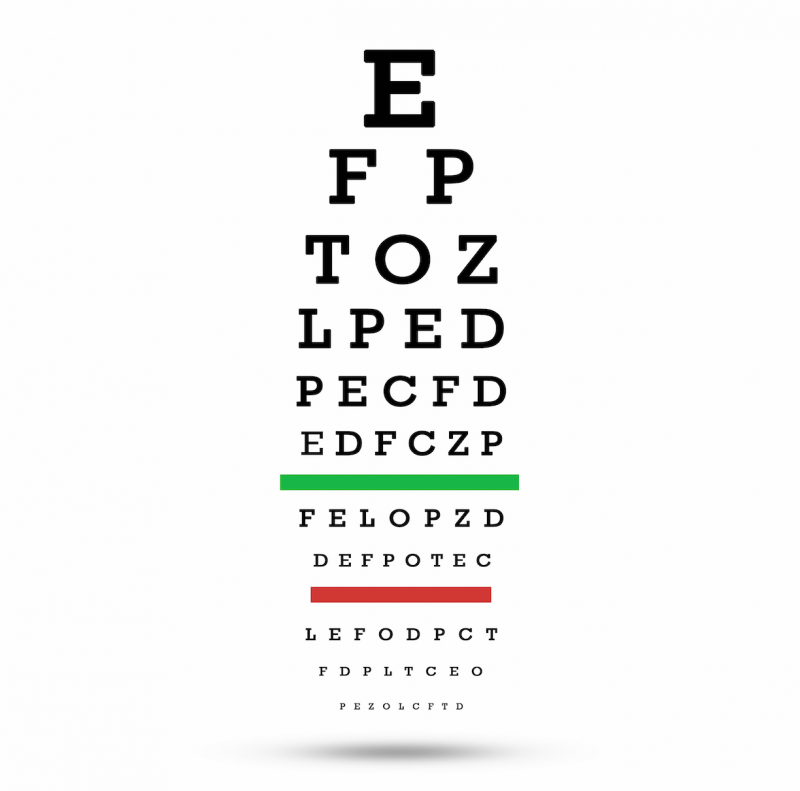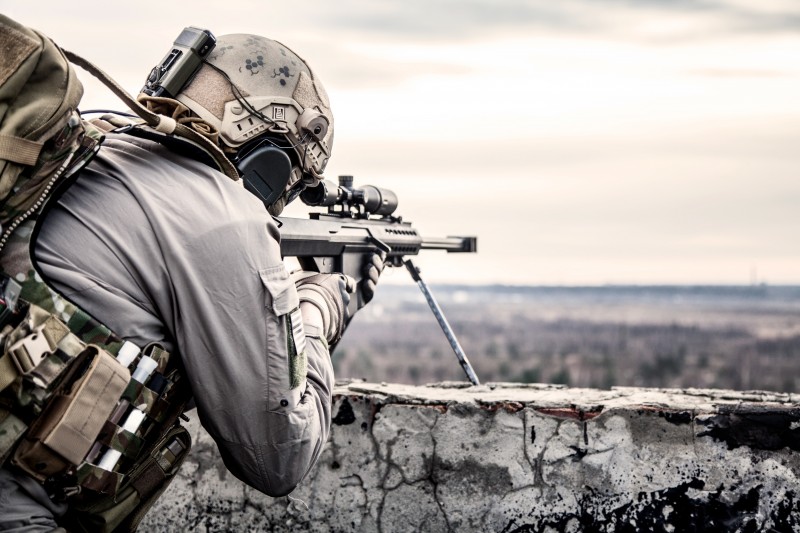
Even if you tell me you've never played a video game, you have. It's just nobody ever called it one. I'm referring to a grade school ritual we experienced, or at least as a child remembering to have your visual and auditory abilities tested. For your vision, it was to tell an examiner after covering one eye with a shield asking you which way an E on a wall chart was pointing.
Early in school, we all had our visual and audio skills tested for wearing glasses or hearing aids to improve our abilities to be educated. As an adult, or in military physical testing, you probably encountered what's called a Snellen test, to read the letters of a chart on the wall which were in rows of diminishing size. It's academically known as a Snellen chart, which is what many simply know today as an eye chart as a means for any medical practitioner to measure how well you see. As the letters become smaller, distinguishing them, of course, becomes more difficult.
The letter E is balanced for how much of the space it takes on a page and why it's used—half of black lines and half of white spaces. As the rows of the letter get smaller, distinguishing which way it is pointing becomes more challenging in the ability to visually recognize the black and white spacing as they shrink in size.
The Snellen chart for a doctor, is their tool to measure what academics call, Gray Scale Acuity (GSA). The science of visual skill is extremely simple to define. It's how well you can distinguish differences in color. My question is, have you ever had it tested as an athlete since your younger years?
While few understand or appreciate that skill, our military does. Since visual skill training doesn't exist for recreational athletes, the difference of abilities between entertainment sports and the perceptual needs of combat have absolutely nothing in common. Explaining and teaching the difference between the two is the science I work with.
RELATED: The Next Generation Athlete
For the world of explaining video games to the uninitiated, my introduction is simple. The E chart of your childhood is simply the nursery school test of one's GSA measure. The Snellen chart is of high school level sophistication. With that reference to introduce anyone to video games, I describe their players as competing at the Ph.D. level of eye chart testing. In the world of gaming, the Snellen chart takes on a very different perspective few understand in connection.

Chakrapong Worathat © 123rf.com
How many of you played a game usually published in your local newspaper known as object search games? These games ask the viewer to find hidden objects such as a pencil drawn into the post of a fence, or an ornate indoor picture frame where a house windowsill should be. Its other variation was to present two picture panels and distinguish differences between the two drawings. It may have been the number of buttons on a coat or moved object on a table. However, both variations define our abilities to detect differences in our environment with simple black and white, fully contrasting colors. What the games represent are examples referred to as grayscale games. They are visual games, challenging your abilities to detect subtle environmental variations.
In video games, the TV screen merely replaces the piece of paper on the wall. Only a good game isn't simply trying to challenge your GSA abilities, but end your game if you aren't quick enough to figure out where the letters are and what they are.
In testing players of first-person shooting games, I mentioned their abilities to have better night vision than their non-gaming counterparts. The above explains why. With combat games based upon simple camouflage colors, improved recognition and reaction is a skill translatable to improve your visual skills with real-world application.
While GSA is what professors discuss while drinking expensive scotch and smoking cigars at stuffy conferences, the battlefield is the real test of how well one can distinguish colors. This is why, as a video game player, I'm salivating to think of what the next generation of video games will bring to the combat training realm.
To explain, my Xbox produces a TV resolution of 1080 lines on my screen. With the coming new generation of gaming consoles this year are reported to manage a screen of eight thousand lines on a TV (known as 8K). Not only will pictures be much sharper than my current system, but the ability to challenge GSA with their players will also be significantly enhanced as well.
While academic GSA measure is done with the sharp contrasting colors of black and white, that simplicity doesn't exist in combat. The fundamental skill of mission success is your ability to distinguish the difference between man-made camouflage and natural color generation. Add in the variable of combat usually beginning at night, and those extremely subtle differences are exponentially more challenging to detect.
For athletes, it doesn't mean much. However, for the warfighter, that visual sensitivity is the difference between seeing the open landscape in front of them or finding the hiding spot of a machine gun post set to protect the waypoint of the terrain.
In combat, visual perception is the foundation to mission success. In sports, the same is true. However, the impact significance is harder to prove in the 100 yards of a football field than the six-mile visual range of an M1 Abrams. The further the distance apart, the ability to detect a camouflaged enemy becomes not only more difficult, but whoever detects the enemy first will have the combat advantage. The poorer the visual skills, the closer one has to be to any adversary for detection, which puts lives at risk in any firefight.
For athletes, visual skill has no academic focus. However, as any athlete seeks the competitive edge to improve in ability, every small increment able has a monumental impact towards separating oneself from everyone else.
Of course, for the athletic community, my joke is very straightforward. While the design style of any typical gym is plastered with motivation slogans, I have yet to find one with a Snellen chart on the wall. Which do you think has greater impact towards impacting your athletic skill, cliche sayings or an eye chart?
If you have what academics refer to as 20/20 vision, the accepted definition of "normal," the vast majority of us will simply accept that measure and be happy. But for the athlete or warfighter of the future, that number will no longer be deemed acceptable. What I can tell you today is that our military elite by 2030 will require having 20/13 visual perception ability as a minimum to be chosen for participation in high stakes operations.

zabelin © 123rf.com
The science of visual cognition is based upon how well one can see, which is academically known as visual acuity. Having 20/20 vision simply means that you can see at a distance of 20 feet. Having 20/13 visual acuity means you can see at 20 feet what an average person can see 13 feet away.
If you've taken a Snellen test recently, having 20/13 vision means you can read two lines of letters on the chart below our cultural norm of 20/20. Why having 20/13 in visual acuity measure as a combat minimum is, of course, the science I work with. And before explaining how to achieve such a measure, naturally for me, video games are the answer.
While I do enjoy watching sports, it remains entertainment for me. Where my distinction in athletic skill leaves such ability behind, is when it's contrasted with the perceptual skills demanded of our combat elite. As a scientist, I can tell you that athletic abilities and visual acuity are well recognized in performance connection. In fact, the quickest athletes are also documented to have 400 percent better eyesight than you do, which begs the question as to how you measure against them. Given how sports are presented, I can tell you that you don't stand a chance to ever get that good.
Modern athletes perform in an environment every warfighter absolutely fears. Think about it. In sports, athletes play under bright lights and wear flashy contrasting and easily distinguishable colors. In combat, warfighters wear camouflage. And unlike spotlight scrutiny of any sports arena, their operations don't begin until night and usually when it's darkest possible.
There also no contrasting colors on their uniforms either, but those which best blend into their surroundings. Combat isn't a game of being seen. It's a constant effort of being as invisible as possible. At issue is while the science of creating camouflage continues to improve, the science of teaching warfighters how to detect it hasn't.
While videogames such as Call of Duty, depict the speed and quickness necessary to fight in hand to hand combat of modern warfare, we fight in the world's regions whereas it's a battle between snipers. And that is a game of cat and mouse—locate a killer trained in hiding and eliminate them before they see and kill you.
While sniper games are available on the market to play, of course very few play them. Given what's at stake in finding a hidden enemy, you'll understand why some of the most important discoveries of the video game research conducted has documented in clinical studies to impart the ability to improve detection of environmental change in their surroundings.
As video games now enter a new generation of TV resolution clarity, it's what trainers should welcome as the next generation of Snellen chart for combat and athletes. The smaller the individual pixels of resolution on a television set, the finer distinction of color detail and shading will make finding enemies in combat video games that much more difficult to recognize.
MORE: What Does It Mean to Be a Gamer?
For the athlete, improving visual acuity skills has more refined applications. If you can better detect a change in the size of a soccer ball in flight, it'll be easier to figure out what direction it's travelling and how fast as it flies above you. With tennis, playing video games helped me visually isolate my ball from a sometimes glaring sun right above me as I tossed it up to serve.
And if you were to ask the pinnacle sport where GSA plays a significant role, it is ski racing. At the speeds their athletes travel, imagine racing as fast as one can in dense fog conditions. Given how similar snow and fog are in color, I've had multiple ski racers tell me how terrifying it is to compete under such demanding winter environments.
Without a doubt, one's GSA abilities will have a significant impact on anyone's finishing times under such racing conditions. With the speeds top skiers achieve and all while doing so surrounded by colors of very slight variation, the consequences of misreading them are life and death issues at such minimal distinction.
Yes, you've played visual games, yet none have had the impact of video games to improve your visuals. Testing perception has value. Video games teach the skill. The up and coming generation of gaming athletes is well aware of the enhanced abilities they impart. However, few understand why. Don't be one of them.
References
- Video game players excel at change detection
- Visual acuity and contrast sensitivity testing for sports vision
- Racial variations in vision
- Video Games Improve Vision, Study Says
Header image credit: Sergey Nivens © 123rf.com











1 Comment